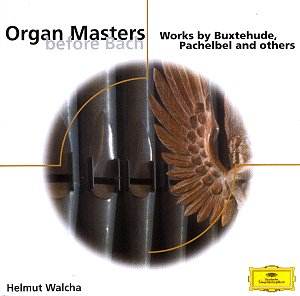| No. 246 of the ongoing ITYWLTMT series of audio montages can be found in our archives at https://archive.org/details/pcast246 |
=====================================================================
This week’s
Blog and Podcast is the first of a pair of “single work:” podcasts, picking up
an old podcasrt arc from a couple of years ago. It also serves as tribute to
this week’s featured composer, who died 25 years ago.
Post World
War II was a turbulent time for classical music. If it ever existed, the linear
narrative of music from Bach through Brahms had broken down. In 1949, the year Messiaen’s
Turangalîla-Symphonie premiered in Boston, Richard Strauss died,
the school for new music in Darmstadt, Germany, celebrated Schoenberg’s
75th birthday with performances of his works, and Theodor Adorno’s Philosophy
of New Music appeared, in which he wrote that new music had “taken upon
itself all the darkness and guilt of the world.” This didn’t mean that
audiences were eager to embrace new music…
Turangalîla
is one of the most epic symphonic works of the 20th century. An example of
“world music” long before that term had currency, it combines the Tristan myth,
Eastern mysticism, Hindu and Greek rhythms, Indian scales, African dance, Indonesian
drumming, and Poe-inspired Gothicism, while laying out Messiaen’s lifelong
signatures, including birdsong, piercing woodwind choirs, and mystical blocks
of sound. Few symphonic works are more challenging, yet more viscerally
thrilling.
Messiaen
faced much personal tragedy during and after WWII – his capture and internment
in a German Stalag, and the increasingly debilitating mental illness of his
wife, Claire Delbos. Among his first students at the Paris Conservatoire was
Yvonne Loriod, a brilliant pianist who was his inspiration for the
Turangalîla-Symphonie and became his second wife after Delbos’ death. It was in
this context that, in 1945, Serge Koussevitsky commissioned the work.
The
Turangalîla-Symphonie focuses essentially on love: its euphoria, terror, and
link with death. The title of the symphony itself suggests the interwining of
love and death, combining two Sanskrit words, “turanga” (“the passage of time,
movement, and rhythm”) and “lîla” (“the play of creation, destruction, life and
death, also love”). It was Messiaen’s first large orchestral piece and notable
for inclusion of prominent solo parts for piano and ondes Martenot, an
early electronic instrument known for its otherworldly sound.
While a
symphony in name, Turangalîla bears little relation to a traditional symphony,
unfolding in 10 movements - some harshly dissonant, others unabashedly sensual.
It retains elements of classical form, but inaugurates a counter-tradition of
stasis, repetition, and mosaic-like color patterns.
The premiere
of the Turangalîla-Symphonie by Leonard Bernstein and the Boston Symphony
Orchestra received mostly negative reviews. Koussevitsky had a different view,
proclaiming the Turangalîla-Symphonie “the greatest composition composed in our
century” after Stravinsky’s The Rite of Spring. If performances
and recordings are any indicator, Koussevitsky’s judgment came closest to the
mark.
The
recording featured in this week’s podcast is a vintage recording by a young
Seiji Ozawa during his tenure as Music Director of the Toronto Symphony. (We
have to note the close relationship between Ozawa, Messiaen and Leonard
Bernstein, which gives much credence to the performance). Although there have
been recordings specifically identified as having benefited from Messiaen’s
personal supervision, the presence of Messiaen’s wife and sister in law (Yvonne
Loriod is the pianist and her sister, Jeanne Loriod, plays the ondes Martenot)
very likely mean that Messiaen was in Toronto during the sessions. There have
been numerous accounts of Turangalîla since Ozawa's pioneering effort in 1967
(the first really viable version of the stereo era), but none have surpassed
Ozawa for the ideal balance of elemental power and discipline; the majestic
energy and terrifying ethereality can be best described as explosive.
I think you will love this music too!



:format(jpeg):mode_rgb():quality(90)/discogs-images/R-7859-1457979600-3491.jpeg.jpg)
:format(jpeg):mode_rgb():quality(90)/discogs-images/R-2392150-1328197864.jpeg.jpg)



